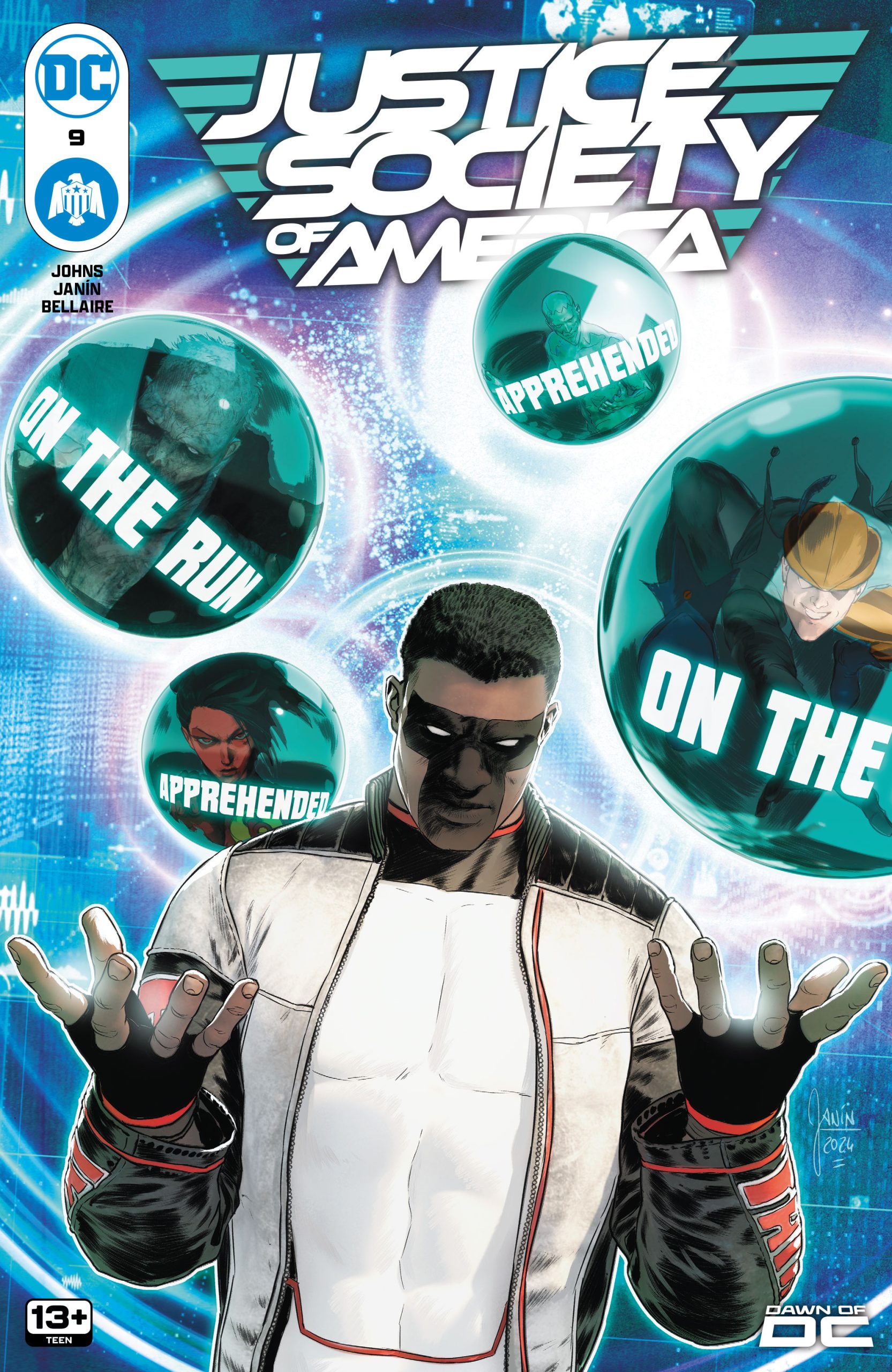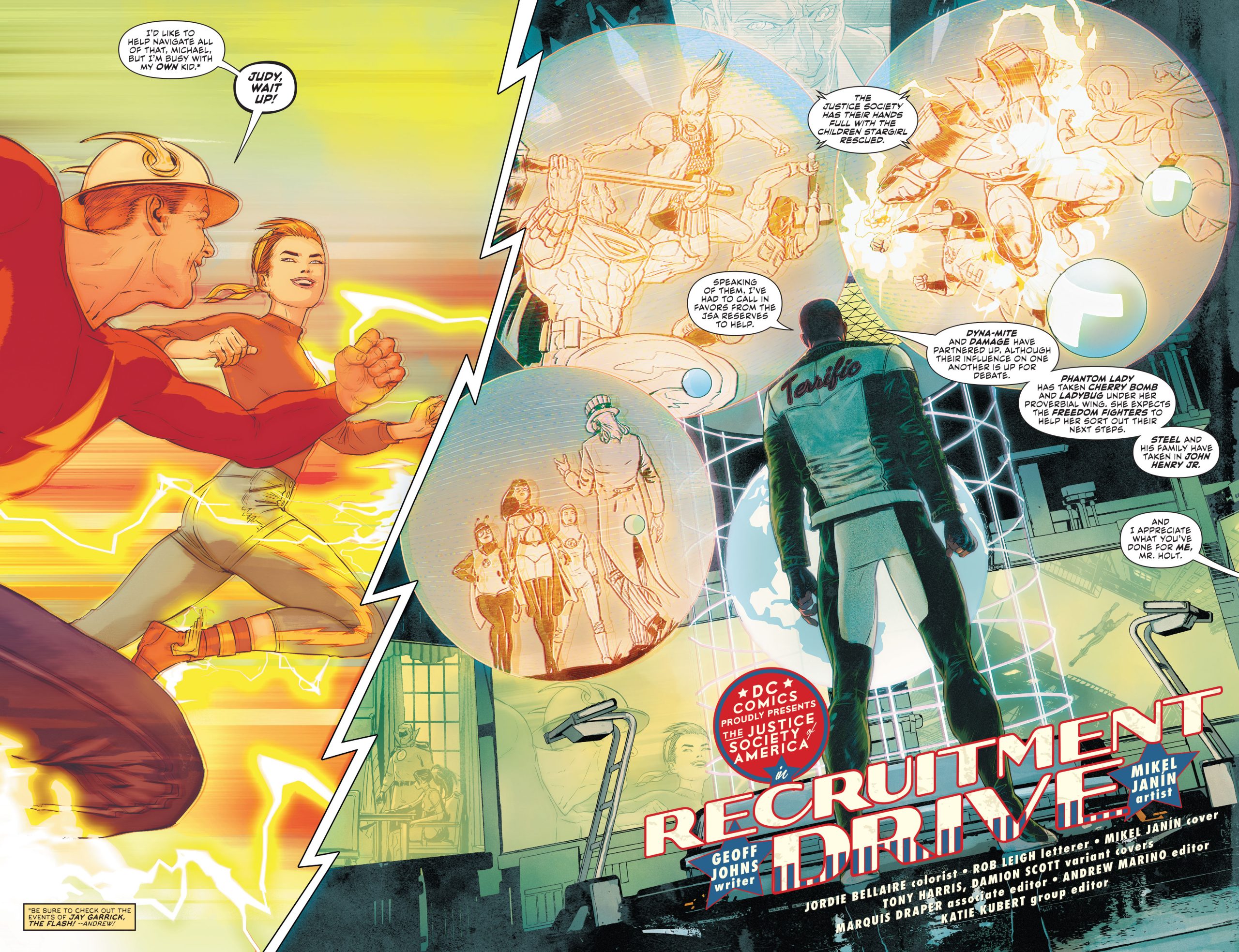Review: Justice Society of America #9 [Editor’s Note: This review may contain spoilers]
[Editor’s Note: This review may contain spoilers]
Writer: Geoff Johns
Art: Mikel Janin
Colors: Jordie Bellaire
Letters: Rob Leigh
Reviewed by: Matthew B. Lloyd
Summary
The recruitment drive continues and in the process of trying to “apprehend” The Harlequin’s Son, the Golden Age Legionnaire shows up, and…WOW!
Positives
Geoff Johns knows his DC Universe. Don’t take that lightly. It’s not something that can be said about many DC writers these days. Mark Waid, Jeremy Adams and Johns demonstrate every month that they know the history and how things should fit together. Johns plays a huge card this issue on a final page reveal (no spoilers). Additionally, Johns also hints around the edges at some of the changes to history that have transpired in this “New Golden Age.” Even though there are changes afoot as we’ve seen mainly in Alan Scott: The Green Lantern, Jay Garrick: The Flash and Wesley Dodds: The Sandman have also shown some of this new history, though all is not clear. Like it or not, with this series and the three mini-series mentioned above, there is a new history at work here and it’s only being revealed slowly.

The issue is peppered with references to new history as well as what history has been retained. This not only ties in plot elements that have already been introduced, but some of the plot points seen in the adjacent mini-series. Ruby’s story continues last issue which connects to Alan Scott: The Green Lantern, Jay and Judy are busy together which sets them up for Jay Garrick: The Flash, Quiz Kid is seen overhauling a T-Sphere that puts him in position for his appearance in Jay’s book, and we also get a glimpse of the Freedom Fighters, specifically Phantom Lady. This allows Johns to show readers that it’s Grant Morrison’s post- Infinite Crisis iteration of the team.

Positives Cont’d
There are some clever character bits and pieces that are strong. Power Girl seems like the Power Girl we’ve known for the past 48 years and outside the DC mandated uniform bears no similarity to the awful version in her current title. Helena Wayne gets some confirmation that what she’s attempting in giving second chances not only works, but is known in the future as a success as confirmed by the Golden Age Legionnaire. Mikel Janin brings all of this to life beautifully; Justice Society of America #9 is a great looking comic.
The chase for The Harlequin’s Son, Michael Mayne, points to some of the history that is different and needs to be filled in. Mayne is a new character, and what he says suggests some things about his mother. He seems to cast her in more of a villainous role than her pre-“New 52” history. Mayne’s mention of his father not only raises the question of who his father is, but curiously point to the person I’m willing to suggest here- Alan Scott. There’s a long story there, but it’s not mine to tell.

Justice Society of America #9 ends on a reveal that again points to Johns knowledge of DC Comics history. It’s a reveal that will be a “holy $#!+ moment for readers who know. It’s an incredible plot development that will certainly raise a lot of questions about the current state of the 31st Century.
Negatives
The negatives in this issue, outside of delays (maybe on purpose to line up with the other mini-series?) really can’t be determined until Johns’ plot points come to fruition. So far the journey on this new history has been pretty compelling, and only time will tell. Unfortunately, Johns is scheduled to leave DC behind soon and what comes after this issue is completely unknown. Jeremy Adams seems to be the best candidate to continue with Robert Venditti a close second. It’s not like they’re going to lure Roy Thomas in for a run. After the first issue of Dan Jurgens The Bat-Man: First Knight, I would throw his name in the ring as well.

Verdict
Johns has certainly been doing the best job of presenting DCU history changes between this title and the related mini-series (Jeremy Adams is a close second in Jay Garrick: The Flash), and this issue is a prime example of that. The biggest question remains is if it is being done well enough for readers to embrace it. Justice Society of America #9 presents a number of ideas and it still feels like there’s not enough space to give resolution to all of them. Perhaps, the point is not to reveal everything, but set things up for them to be developed elsewhere and elsewhen. This issue though is quite wonderful.
